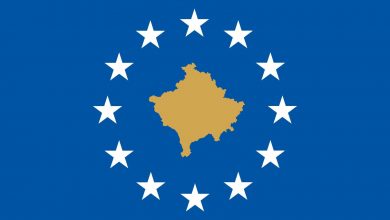Spanish General Election 2019: All You Need to Know

As Spaniards head to the polls this Sunday, here is all you need to know about the snap election called by Spanish Prime Minister Pedro Sánchez, called following a failure of the minority government to find enough support for a key budget vote. In particular, Spain is called to vote on the composition of both houses of the Cortes Generales, the Congress and the Senate.
Congress
All 350 seats in Congress are up for election on a provincial basis. Electoral law gives each of the fifty Spanish provinces two MPs, while the autonomous cities of Ceuta and Melilla in North Africa get one each. The remaining 298 seats are apportioned according to the largest remainder method, resulting in the distribution in the picture below.

General elections in Spain run on a closed list system combined with the d’Hondt method, also known as Jefferson’s. Thus, the result is, in principle, proportional in each constituency. However, practice brings some unexpected results.
As it turns out, 145 MPs come from constituencies where fewer than seven MPs are elected, which is very unfavourable to a nation-wide proportional outcome, as vote is fragmented in almost all the constituencies. This has a detrimental effect on parties that lack a vote stronghold despite polling decently at the national level. Indeed, this system has historically favoured the two mainstream parties, the conservative PP and the socialist PSOE, as well as the nationalist parties radicated the Basque Country and Catalonia.
Senate
The upper house, which consists of 266 members, has all its 208 directly elected seats open for contest in this election. The remaining 58 are appointed by the autonomous communities’ legislative bodies and their terms depend on the regional assemblies’ confidence, not on the result of a direct vote. They will retain their seats irrespective of what happens on Sunday.
The Constitution gives each mainland province four senators, irrespective of its population. The larger islands elect three while the smaller islands or groups have one representative. Ceuta and Melilla are apportioned two senators each.
In the case of this house, the system in use is plurality-at-large: the ballot paper consists of all the candidates standing for election in the pertinent constituency, and electors pick a maximum of three (two in the islands electing three senators, Ceuta, and Melilla; one in the islands electing one).
It is common that voters pick all three (or two) candidates endorsed by their favourite party, so most constituencies have three senators from the party winning the Congress election and one from the second, as Senate votes are highly aligned with Congress ballots.
Traditionally, the Senate has only acted as a second-reading chamber, so it has customarily received little to no attention (indeed, Senate results are given a few minutes of coverage every electoral night, compared to the hours Congress gets). However, this house has acquired renewed prominence following the Catalan crisis in 2017: it has exclusive powers when it comes to Section 155 of the Spanish Constitution, that is, the central government imposing direct rule on an autonomous community. This may bring about renewed voting patterns, and several tactical voting initiatives are becoming viral these days.

Main parties
For the first time ever, as many as five nation-wide parties are contesting the election and are expected to get at least 10 seats. They are scattered across the left-right spectrum and their stance on hot topics like the regions’ powers tends to be more prone to centralism the more on the right they are, but their differences trascend this divide.
There are also regional parties on both the right and left of the political spectrum in many parts of Spain, with a view of their region’s status in Spain ranging from defending the status quo to the active seeking of their independence. Not all of them are expected to be politically relevant in this general election, especially those that will contest it in coalition with larger parties, but those from Catalonia and the Basque Country have been especially relevant as they have often been kingmakers in Spanish politics, and that is the reason why they are given some attention in this article.
Partido Popular (People’s Party, EPP)
They are currently the largest party in Congress, with 137 out of 350 MPs and command a strong majority in the Senate, with 148 out of 266 seats. Their leader, Pablo Casado, was elected following the no-confidence motion that forced Rajoy out of the premiership and his subsequent resignation as party leader.
Contrasting with Rajoy’s general preference for moderation and general reluctance to tackle social issues or the Catalan crisis, Casado describes himself as a man of action and has promised to impose home rule in Catalonia from day one. While the People’s Party are not supportive of further decentralisation, they do not advocate for a stronger central state but for more harmonisation by means of national law. The party is also in favour of close ties with the Church and of promoting traditions, especially those that stem from religion.
Partido Socialista Obrero Español (Spanish Socialist Worker’s Party, PES)
They are the second party in Congress and the Senate, with 85 and 61 seats respectively. This is the party supporting Pedro Sánchez’s government, relying on the parliamentary support from their partners on the left.
PSOE are a socially progressive party in areas such like LGBT and women’s rights, encompassing this view with a respectful attitude towards the Church and other confessions. They favour a smooth transition towards renewable sources of energy. With regards to Catalonia, they reluctantly supported direct rule once independence had been declared, but here is where the similarities with PP end. PSOE have a federal vision of Spain where the regions enjoy more powers and the different nationalities within Spain have a stronger entity.
Unidas Podemos (United We Can, GUE/NGL)
They are represented by 71 MPs and 20 senators, being the third force in both houses of the Cortes Generales. Their leader, Pablo Iglesias, is a former political sciences lecturer, and often a controversial figure at the time he is widely regarded as an excellent speaker. They supported Pedro Sánchez in the no-confidence motion to oust Rajoy, and they have regularly backed the Prime Minister’s proposals.
Unidas Podemos has economic proposals ranging from social democracy to socialism, and feminist and environmentalist features in most of their policy areas. Unlike PSOE, they lack any government experience -notably, they are junior coalition partners in some regions, but they are yet to assume a national department – and have a stronger push for democratic regeneration and the fight against corruption.
They have a confederal vision of Spain, supporting a looser union between the regions than PSOE. They never agreed to impose direct rule in Catalonia, not even as independence was being declared from the regional parliament, and they do support a referendum on independence. This centrifugal stance is brought to the spotlight way more often in regions with nationalist movements than in the rest of Spain, where they focus more on social issues.
Ciudadanos (Citizens, ALDE)
This is the fourth party in Congress, with 32 MPs but one of the smallest in the Senate, having only have 4 seats in the upper chamber. This party was born as an scission of the Catalan branch of PSOE in 2006 and encompassed a progressive agenda with a rejection of regional nationalism.
They have, with time, become part of national politics and joined the liberal coalition ALDE, and their economic stance varies nowadays from liberal to slightly conservative on most issues. With regards to the territorioal problem, they are opposed to further devolution and advocate some recentralisation of public services, and they enthusiastically voted for direct rule in Catalonia during the 2017 crisis. Albert Rivera, a former lawyer, has led the party since its inception.
Esquerra Republicana de Catalunya (Republican Left of Catalonia, Greens-EFA)
They are the fifth delegation in Congress with 9 MPs and the fourth group in the Senate, with 12 seats. This party is older than the Spanish democratic regime itself and has long been Catalanist, left-leaning, and republican. When short of a majority, socialist governments have traditionally relied on their support, as they generally see eye to eye with them on social issues and economic policy.
It was in the last decade that they brought the Catalan question into the mainstream debate, advocating for an independent Catalonia. In Catalan politics, they have propped up the regional government since 2012 with their leader, Oriol Junqueras, as deputy First Minister until Catalonia was put under direct rule in the aftermath of the 2017 crisis.
Junts per Catalonia (Together for Catalonia, non-inscrits)
They currently have 8 MPs and 4 senators, and they are the successor of Convergencia i Unió (Convergence and Union, ALDE), the traditional Catalanist party on the right, commanding the regional government of Catalonia ever since 1980 except for the 2003-2010 hiatus, when a socialist-led coalition took control. It was only after the 2012 Catalan election that CiU bidded for independence, amidst the economic crisis in Spain and with their popularity in historical lows in the region.
Their current leader and former First Minister of Catalonia, Carles Puigdemont, keeps pushing for the region to unilaterally pursue independence, so the party might end up isolated in the Cortes Generales as Esquerra Republicana are seen as more pragmatical. Throughout Spanish democratic history, they have been able to strike confidence and supply deals with either PP or PSOE, proving themselves to be a reliable partner in the days before they decided to put a question mark on Catalonia being part of Spain.
Euzko Alderdi Jeltzalea-Partido Nacionalista Vasco (Basque Nationalist Party, ALDE)
Currently represented by 5 MPs and 6 senators, they have been in control of the Basque government since its autonomy’s restoration except for the 2009-2012 term. Defenders of all-things Basque and, especially, the singular fiscal compact the Basque provinces enjoy by tradition, they have never spoken in favour of independence nor have they committed to the Basque Country remaining a part of Spain forever.
They support the Catalan question being resolved by means of a referendum and always push for further powers being transferred to the regions, but they put the focus away from the territorial question. Socially, they lean towards conservatism yet they are not opposing modernisation, and they do support a liberal economic policy.
Euskal Herria Bildu (Build the Basque Fatherland, GUE-NGL)
With 2 MPs and 1 senator, they are one of the smallest forces in the Cortes Generales. They caucus with PSOE and Podemos in most social and economic issues, their biggest differences with them arising in their vision of the Basque Country, as they are boldly in favour of its independence from Spain. They are also strong proponents of the Basque language and culture, and they put an accent on anti-capitalism as well as ecologism and feminism.
Vox (Voice)
Currently unrepresented in the Cortes Generales, this party was created in 2013 by People’s Party defectors on the right wing on the party. Their founders left the party as Rajoy, with a majority in both houses, moderated his party’s stance on social issues and refused to deal harshly with the Catalan question. Their main focus is recentralising the state and they are grousingly nationalistic.
Unlike the other parties, they oppose the Schengen acquis and want powers to flow back to Madrid from the EU. Their leader, Santiago Abascal, is fervently Catholic, and has aligned himself with the likes of Matteo Salvini and Steve Bannon. The party has a traditionalist vision of Spanish society without room for feminism or LGBT rights; notably, this party opposes abortion, same-sex marriage, adoption of children by same-sex couples and trans persons having their names changed. On the other hand, they take a hard stance on immigration, having pledged to build a wall with Morocco in Ceuta and Melilla.
This party gained widespread national attention in two key moments: one, in the aftermath of the 2017 Catalan crisis, as they took part in the trial following the declaration of independence; and secondly, in December 2018, when they polled at 11% and took twelve seats in the regional elections in Andalusia, more than any of the polls had predicted.
Polls
As a result of electoral law, no polls may be published in the five days prior to the election, so the latest data available came out on Monday night, following the first of two debates between Pablo Casado, Pedro Sánchez, Pablo Iglesias, and Albert Rivera. It is understood that PSOE will win the election, and PP will come in second. The battle for the third place is expected to be closely fought between Unidas Podemos, Ciudadanos, and Vox, and the nationalist vote will not undergo significant change where regional parties contest the election.

As the chart suggests, there are broadly two ideological blocs: on the left of the political spectrum, PSOE and Unidas Podemos; on the right, PP, Ciudadanos, and Vox. Each party’s gains have usually been at the expense of others in the same bloc.
There have been three trends in the run-up to the electoral night: PP’s decline starting in October 2017, coinciding with the high of the Catalan crisis, which say Ciudadanos rise both in vote share and seats until Pedro Sánchez took office (June 2018). Following that, Pablo Casado was elected as the new PP leader and pollsters understood some voters would come back to the conservative formation, but both PP and Ciudadanos have been steadily losing ballots to Vox, especially since the Andalusian election in late 2018. Lastly, PSOE have gained popularity at the expense of Unidas Podemos in the last months; however, a shadow is cast on some of the polls involved, since their projections offer substantive differences with most other surveys in favour of the governing party.
What will happen after the election?
It is hard to tell beforehand what will the future government look like, and what follows is pure speculation based on what the different parties have said in the last weeks and simulations carried out by El País.
According to this news report, the most likely scenario would land Spain with the following seat distribution: PSOE, 129 (102-155); PP, 78 (57-103); Ciudadanos (Cs), 46 (24-64); Unidas Podemos (UP), 35 (21-52); Vox, 30 (11-50); and others, 32 (27-37). In brackets, the 90% confidence interval is given, which means that there is a 90% certainty that each party’s tally of seats will fall within these intervals.

The bloc on the left (PSOE and Unidas Podemos) is given a 30% chance to secure a majority and it would be surprising for them not to reach a deal. They might need the support of the Basque and Canarian nationalists (additional 15% chance), and then the negotiations would likely be more complex.
On the assumption (10% probability) that the bloc on the right will obtain a majority, it has been pointed out that PP and Ciudadanos will likely make a deal with each other following the electoral night, but they would need the right-wing Vox to secure the legislative’s confidence.
It is also too early to rule out a PSOE-Ciudadanos government, which would be viable in 19% of the simulated scenarios. They already secured a deal back in early 2016, but it was voted down by Congress, and Pedro Sánchez has dodged the question of whether he would govern with Ciudadanos or not.
This leaves the prospect of a government with a different composition or an impromptu general election, if such an option is not invested with the lawmakers’ confidence. This scenario is the outcome of 27% of the simulations.





![Photo of [OPINION] A Europe of Regions Makes no Sense](https://mycountryeurope.com/wp-content/uploads/2018/04/ggg-390x220.jpg)
Vox are going to win this elections. All the made polls are fake news